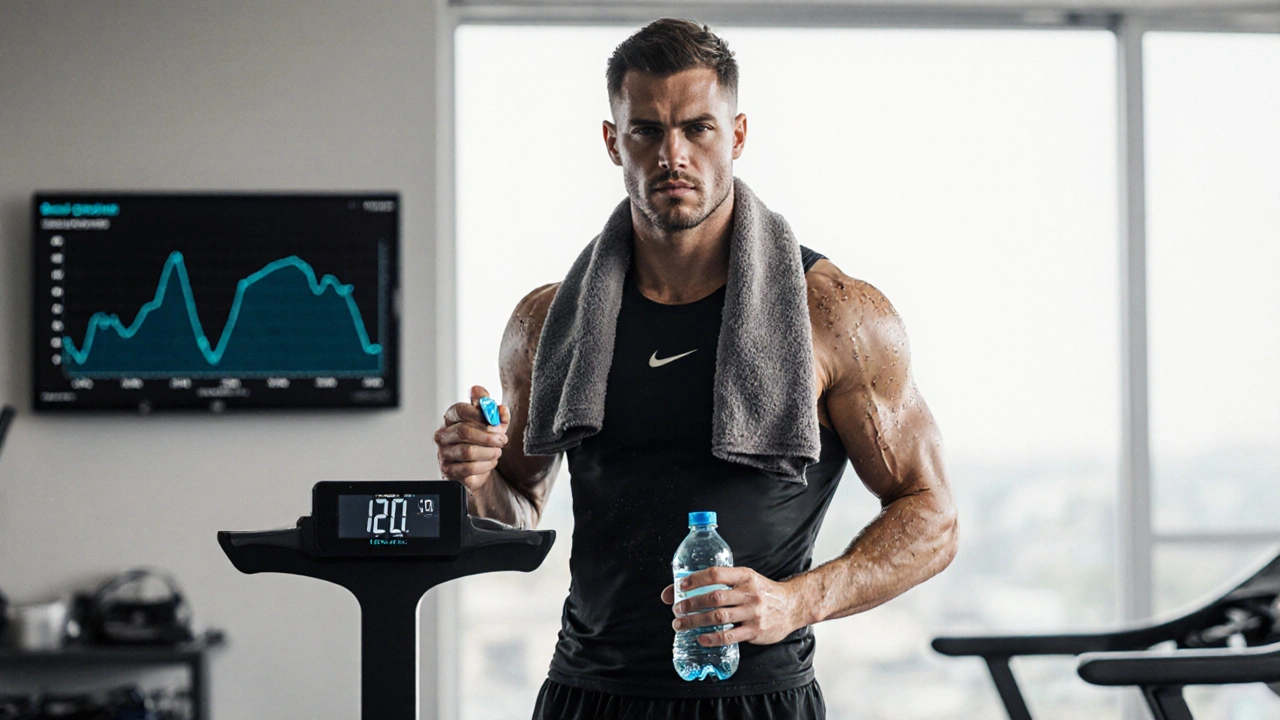
How to Prevent Hyponatremia in Athletes: Proven Tips and Tricks
Learn practical steps to stop hyponatremia in athletes, from calculating sweat loss to choosing the right electrolytes, with real‑world tips, a comparison table, and FAQs.
When working with athlete hydration, the process of keeping fluid and electrolyte levels optimal during training and competition. Also known as sports fluid management, it directly influences stamina, focus, and injury risk. Understanding the science behind it lets you fine‑tune intake and avoid the hidden cost of even mild dehydration.
Fluid intake planning is the backbone of effective hydration. It starts with electrolyte balance, the right mix of sodium, potassium, magnesium, and calcium that helps the body retain water and fire nerve signals. Without enough electrolytes, water slips out of cells, leading to dehydration risk, a drop in plasma volume that can reduce VO₂ max and impair decision‑making. Knowing your sweat rate and the climate you train in lets you calculate how much fluid and salt you need before the first lap, midway through the match, and after you finish.
Choosing the right beverage matters. Sports drinks, formulated with carbohydrates and electrolytes for rapid absorption are ideal when you need quick energy plus fluid. Plain water works for low‑intensity sessions, but it lacks the salts that replace what sweat takes away. Matching the drink to the activity intensity creates a seamless loop: athlete hydration encompasses fluid intake planning, electrolyte replacement, and timing of consumption.
Finally, rehydration strategies, the set of actions you take after exercise to restore fluid balance close the loop. This includes drinking 1.5 L of fluid for every kilogram of weight lost, selecting a beverage with a 6‑8% carbohydrate solution, and adding a pinch of salt if you sweat heavily. Monitoring urine color, body weight changes, and perceived thirst gives you real‑time feedback. By aligning post‑workout intake with sweat losses, you reduce recovery time and keep muscle function intact.
Beyond drinks, practical habits solidify good hydration. Carry a reusable bottle, set reminders to sip every 15 minutes, and adjust for altitude or humidity. Some athletes use sweat patches or portable analyzers to personalize their plan, turning vague guidelines into data‑driven decisions. When you treat hydration like a training variable—tracking, tweaking, and testing—you unlock consistent performance gains.
The articles below dive deeper into each of these areas. Whether you’re looking for quick fluid‑intake calculators, electrolyte‑rich snack ideas, or step‑by‑step rehydration protocols, you’ll find actionable advice that fits your sport and schedule. Explore the collection and start building a hydration routine that fuels every rep, sprint, and finish.

Learn practical steps to stop hyponatremia in athletes, from calculating sweat loss to choosing the right electrolytes, with real‑world tips, a comparison table, and FAQs.